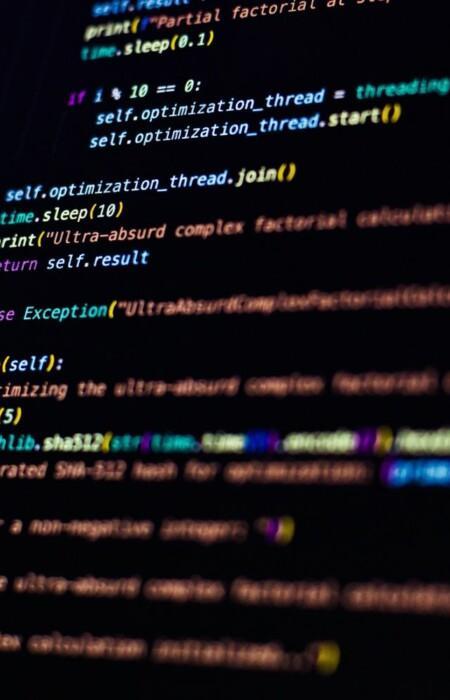Desktop application security in Java
Your application written in Java works as intended, so you are done, right? But did you consider feeding in incorrect values? 16Gbs of data? A null? An apostrophe? Negative numbers, or specifically -1 or -231? Because that’s what the bad guys will do – and the list is far from complete.
Handling security needs a healthy level of paranoia, and this is what this course provides: a strong emotional engagement by lots of hands-on labs and stories from real life, all to substantially improve code hygiene. Mistakes, consequences, and best practices are our blood, sweat and tears.
All this is put in the context of Java, and extended by core programming issues, discussing security pitfalls of the Java language and the runtime environment.
So that you are prepared for the forces of the dark side.
Osallistumismuoto
Remote
Kesto
3 päivää
Hinta
Target Group
Java developers working on desktop applications
Goal
- Getting familiar with essential cyber security concepts
- Identify vulnerabilities and their consequences
- Learn the security best practices in Java
- Input validation approaches and principles
- Understanding how cryptography supports security
- Learning how to use cryptographic APIs correctly in Java
Prerequisites
General Java development
Course Content
Day 1:
- Cyber security basics
- What is security?
- Threat and risk
- Cyber security threat types
- Consequences of insecure software
- Input validation
- Input validation principles
- Blacklists and whitelists
- Data validation techniques
- What to validate – the attack surface
- Where to validate – defense in depth
- When to validate – validation vs transformations
- Output sanitization
- Encoding challenges
- Unicode challenges
- Validation with regex
- Regular expression denial of service (ReDoS)
- Lab – ReDoS in Java
- Dealing with ReDoS
- Injection
- Injection principles
- Injection attacks
- Code injection
- OS command injection
- OS command injection best practices
- Using Runtime.exec()
- Using ProcessBuilder
- Case study – Shellshock
- Lab – Shellshock
- OS command injection
- Integer handling problems
- Representing signed numbers
- Integer visualization
- Integer overflow
- Lab – Integer overflow
- Signed / unsigned confusion in Java
- Case study – The Stockholm Stock Exchange
- Integer truncation
- Best practices
- Upcasting
- Precondition testing
- Postcondition testing
- Using big integer libraries
- Integer handling in Java
- Lab – Integer handling
- Files and streams
- Path traversal
- Lab – Path traversal
- Path traversal-related examples
- Additional challenges in Windows
- Virtual resources
- Path traversal best practices
- Lab – Path canonicalization
- Unsafe reflection
- Reflection without validation
- Lab – Unsafe reflection
- Unsafe native code
- Native code dependence
- Lab – Unsafe native code
- Best practices for dealing with native code
- Input validation principles
Day 2:
- Security features
- Authentication
- Authentication basics
- Multi-factor authentication
- Authentication weaknesses
- Case study – PayPal 2FA bypass
- Password management
- Inbound password management
- Storing account passwords
- Password in transit
- Lab – Is just hashing passwords enough?
- Dictionary attacks and brute forcing
- Salting
- Adaptive hash functions for password storage
- Password policy
- Case study – The Ashley Madison data breach
- The dictionary attack
- The ultimate crack
- Exploitation and the lessons learned
- Password database migration
- Outbound password management
- Hard coded passwords
- Best practices
- Lab – Hardcoded password
- Protecting sensitive information in memory
- Challenges in protecting memory
- Storing sensitive data in memory
- Lab – Using secret-handling classes in Java
- Inbound password management
- Authorization
- Access control basics
- Information exposure
- Exposure through extracted data and aggregation
- Case study – Strava data exposure
- Platform security
- Java platform security
- The Java programming language and runtime environment
- Type safety and security
- Security features of the JRE
- The ClassLoader and the BytecodeVerifier
- Application-level access control in Java
- Permissions and the Security Manager
- Privilege best practices
- Protecting Java code and applications
- Code signing
- Lab – Code signing and permissions
- Java platform security
- UI security
- UI security principles
- Sensitive information in the user interface
- Misinterpretation of UI features or actions
- Insufficient UI feedback
- Relying on hidden or disabled UI element
- Insufficient anti-automation
- Clipboard
- Authentication
- Time and state
- Race conditions
- File race condition
- Time of check to time of usage – TOCTTOU
- TOCTTOU attacks in practice
- Insecure temporary file
- Database race conditions
- File race condition
- Race conditions
- Errors
- Error and exception handling principles
- Error handling
- Returning a misleading status code
- Reachable assertion
- Information exposure through error reporting
- Exception handling
- In the catch block. And now what?
- Catching NullPointerException
- Empty catch block
- Lab – Exception handling mess
Day 3:
- Cryptography for developers
- Cryptography basics
- Java Cryptographic Architecture (JCA) in brief
- Elementary algorithms
- Random number generation
- Pseudo random number generators (PRNGs)
- Cryptographically strong PRNGs
- Using virtual random streams
- Weak and strong PRNGs in Java
- Lab – Using random numbers in Java
- Case study – Equifax credit account freeze
- Hashing
- Hashing basics
- Common hashing mistakes
- Hashing in Java
- Lab – Hashing in JCA
- Random number generation
- Confidentiality protection
- Symmetric encryption
- Block ciphers
- Modes of operation
- Modes of operation and IV – best practices
- Symmetric encryption in Java
- Lab – Symmetric encryption in JCA
- Asymmetric encryption
- The RSA algorithm
- Using RSA – best practices
- RSA in Java
- The RSA algorithm
- Combining symmetric and asymmetric algorithms
- Symmetric encryption
- Integrity protection
- Message Authentication Code (MAC)
- Calculating MAC in Java
- Lab – Calculating MAC in JCA
- Digital signature
- Digital signature with RSA
- Elliptic Curve Cryptography
- ECC basics
- Digital signature with ECC
- Digital signature in Java
- Lab – Digital signature with ECDSA in JCA
- Message Authentication Code (MAC)
- Public Key Infrastructure (PKI)
- Some further key management challenges
- Certificates
- Certificates and PKI
- X.509 certificates
- Chain of trust
- PKI actors and procedures
- Certificate revocation
- Common software security weaknesses
- Code quality
- Code quality and security
- Data handling
- Initialization and cleanup
- Constructors and destructors
- Class initialization cycles
- Lab – Initialization cycles
- Unreleased resource
- The finalize() method – best practices
- Initialization and cleanup
- Object oriented programming pitfalls
- Accessibility modifiers
- Are accessibility modifiers a security feature?
- Accessibility modifiers – best practices
- Overriding and accessibility modifiers
- Inheritance and overriding
- Mutability
- Lab – Mutable object
- Cloning
- Accessibility modifiers
- Code quality
- Wrap up
- Secure coding principles
- Principles of robust programming by Matt Bishop
- Secure design principles of Saltzer and Schröder
- And now what?
- Software security sources and further reading
- Java resources
- Secure coding principles
Pidätämme oikeudet mahdollisiin muutoksiin ohjelmassa, kouluttajissa ja toteutusmuodossa.
Katso usein kysytyt kysymykset täältä.
Aiheeseen liittyvät webinaarit
Aiheeseen liittyvät blogit


